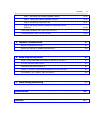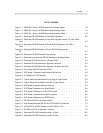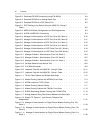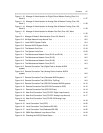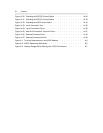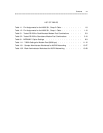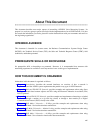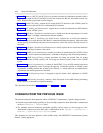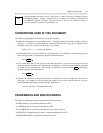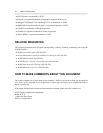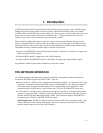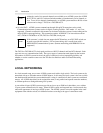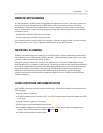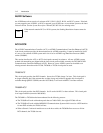About This Document
_ ______________________________________________________________________________________
_ ______________________________________________________________________________________
_ ______________________________________________________________________________________
This document describes most major aspects of networking AUDIX Voice Messaging Systems. Its
purpose is to assist any group or person involved with the implementation of an AUDIX network. If it does
not contain the information you desire, please fill out the feedback form with your comments and send it to
the originating organization.
INTENDED AUDIENCE
This document is intended for account teams, the Business Communications Systems Design Center
(BCSDC), the Technical Service Center (TSC), the Sales and Technical Response Center (STRC), field
technicians, and hotline personnel.
PREREQUISITE SKILLS OR KNOWLEDGE
No prerequisite skills or knowledge are presumed. However, it is recommended that someone with
networking experience be available to assist anyone that is new to this type of implementation.
HOW THIS DOCUMENT IS ORGANIZED
Information in this document is organized as follows.
• Chapter 1, Introduction, describes the network interfaces, an overview of how a network is
implemented, and the AUDIX system requirements that pertain to any type of AUDIX network.
• Chapter 2, Dedicated EIA RS-232 Networks, provides examples and requirements when using direct
cabling to transmit data between adjuncts and PCs using the Electronic Industries Association (EIA)
RS-232 protocol.
• Chapter 3, Switched EIA RS-232 Networks, provides examples and requirements when using a switched
connection through a modem (to a tip and ring circuit) or through a data module [to a Digital
Communications Protocol (DCP) circuit] to the switch.
• Chapter 4, DCP Mode 1 Networks — 56 Kbps, provides examples and requirements when using
AT&T’s DCP Mode 1 for interlocation data transmission.
• Chapter 5, DCP Mode 2 Networks — Modem Pooling, provides examples and requirements when using
AT&T’s DCP Mode 2 for interlocation data transmission.
• Chapter 6, DCP Mode 3 Networks — 64 Kbps, provides examples and requirements when using
AT&T’s DCP Mode 3 for colocated or interlocation data transmission.
xvii



